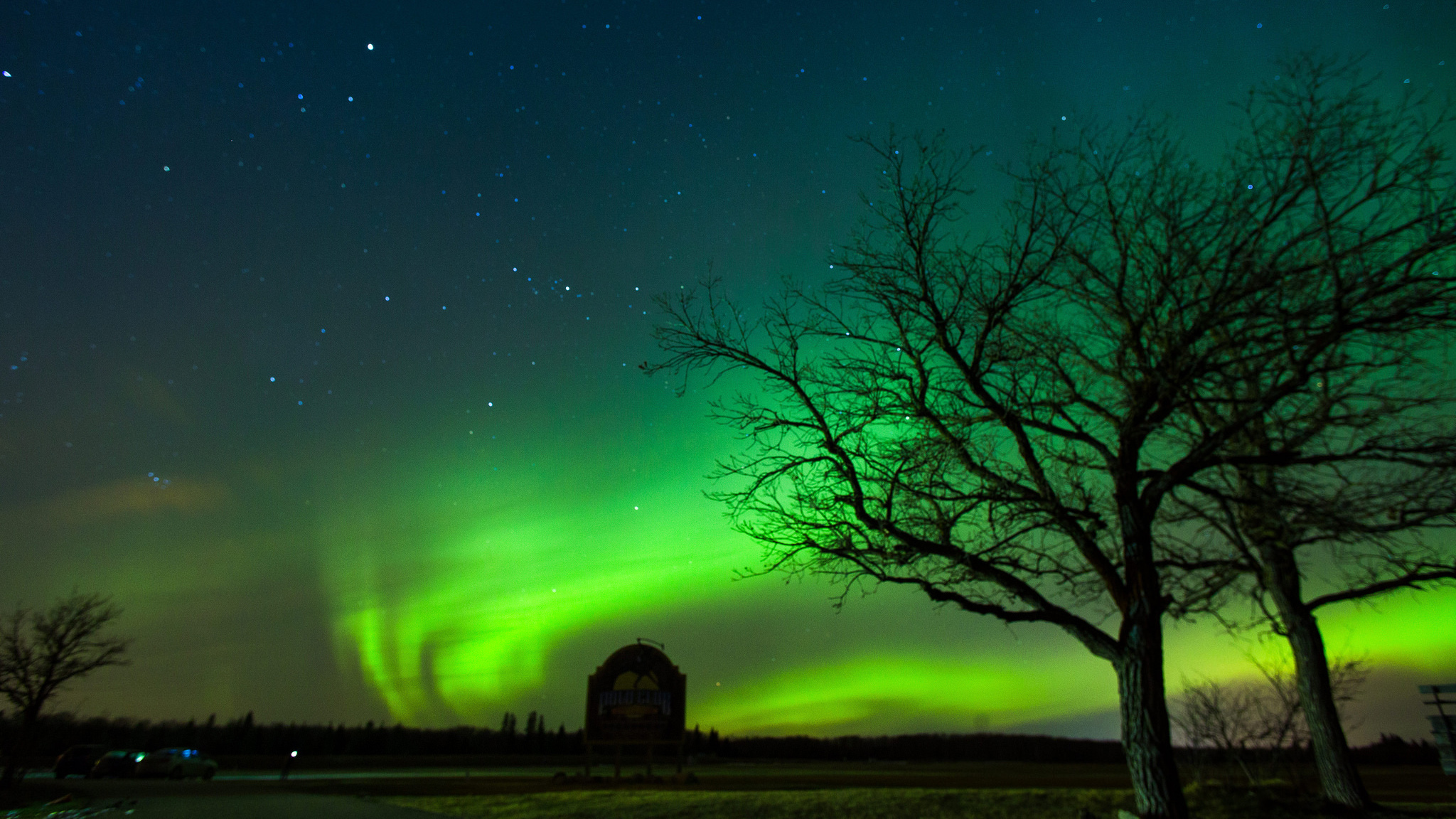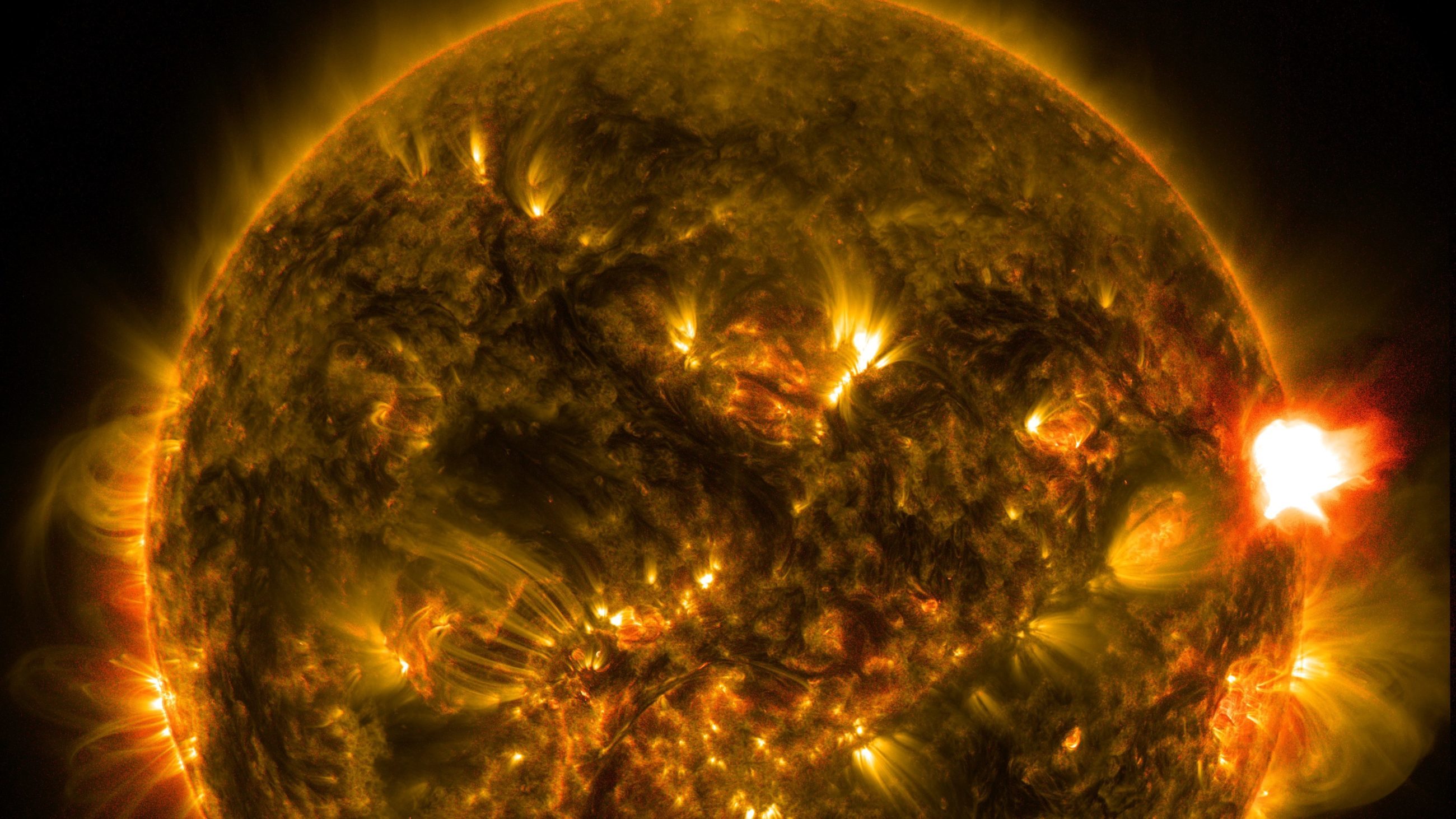NOAA’s New Satellite Keeps an Eye on Space Weather
Beyond weather forecasting and climate modeling down here on Earth, the National Oceanic and Atmospheric Association has started using its newest satellite, the Deep Space Climate Observatory, or DSCOVR, to detect incoming “space weather.”

According to the agency, space weather refers to any solar event that emits bursts of radiation or ejects energetic particles into space, like solar flares — explosions on the sun that shoot charged particles reeling into space. When the Earth gets in the way of those particles, they can bombard our atmosphere; that excites oxygen and nitrogen molecules at the poles, causing them to glow and produce the auroras. These space weather events strike regularly, though very large storms are rare. For the most part they don’t affect the average person, but they can wreak havoc on our electronics.
“With space weather, the biggest potential damage is with geomagnetically induced currents that occur during very, very large [solar] events,” said Harlan Spence, director of the Institute for the Study of Earth, Oceans, and Space at the University of New Hampshire. Such events carry electromagnetic currents into power lines and wires and can overload them, blowing transformers. “We don’t know how often they occur, but we do know that they have occurred in the past, but at a time when we didn’t have the technologies that we have now.”
According to the insurance market Lloyd’s of London, so much electromagnetic power all at once could cut off electricity for 40 million people in the U.S., costing $2.6 trillion and taking up to two years to recover from. Kelly Korreck, a solar physicist at the Smithsonian Astrophysical Observatory, notes that while such major events are rare, smaller flares can still be very damaging.
Smaller space weather events can affect orbiting satellites, GPS, radio, and high-frequency communications like ham radio, which are often used by emergency responders. According to Doug Biesecker, the DSCOVR chief program scientist, it’s critical to have a warning system for such events.
“During the Hurricane Katrina disaster, the most effective way to get information out of New Orleans was via ham radio,” Biesecker said, adding, “So if we’d had a space weather event like solar flares at the same time that Katrina was happening, it would have been even harder to get good information out of New Orleans.”
The charged particles detected by DSCOVR will be traveling close to the speed of light, Korreck said, giving people on Earth little time to react and prepare — maybe an hour, but possibly as little as 15 minutes. Still, Biesecker noted that power utilities in the U.S. need only about five minutes to check their systems and ensure that they won’t be overloaded.
DSCOVR is a modern upgrade from NOAA’s old space weather satellite, the Advanced Composition Explorer, or ACE, and it has some new tools for detecting solar activity and determining exactly where a solar storm might strike. DSCOVR will also allow researchers like Korreck to do basic research that will help them understand the complex physics of the sun and of space weather.
“I was at a conference last week, and many people were begging to see the data from the [DSCOVR] team, because we were talking about the fundamental wave-particle interactions and these very advanced plasma-physics parameters,” Korreck said.
Right now the sun is at a calm point in its cycle, but Biesecker noted that this doesn’t rule out large solar storms — just makes them less likely. The sun will probably keep calming over the next three years until a “solar minimum,” he said. NASA predicts sunspots will begin to pick up again in 2019.
As data collection from DSCOVR continues, NOAA is already planning its next, upgraded satellites. The president’s budget for 2017, which has yet to be approved by Congress, would provide $2.5 million in funding for a continued space weather program; NOAA plans for the “Space Weather Follow On” program to be in place by 2022.










